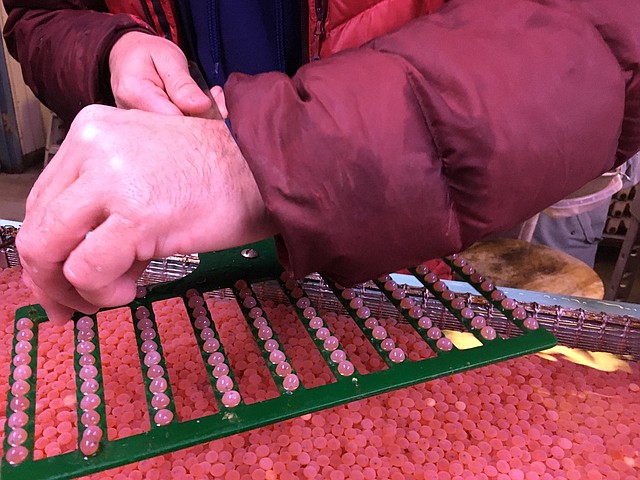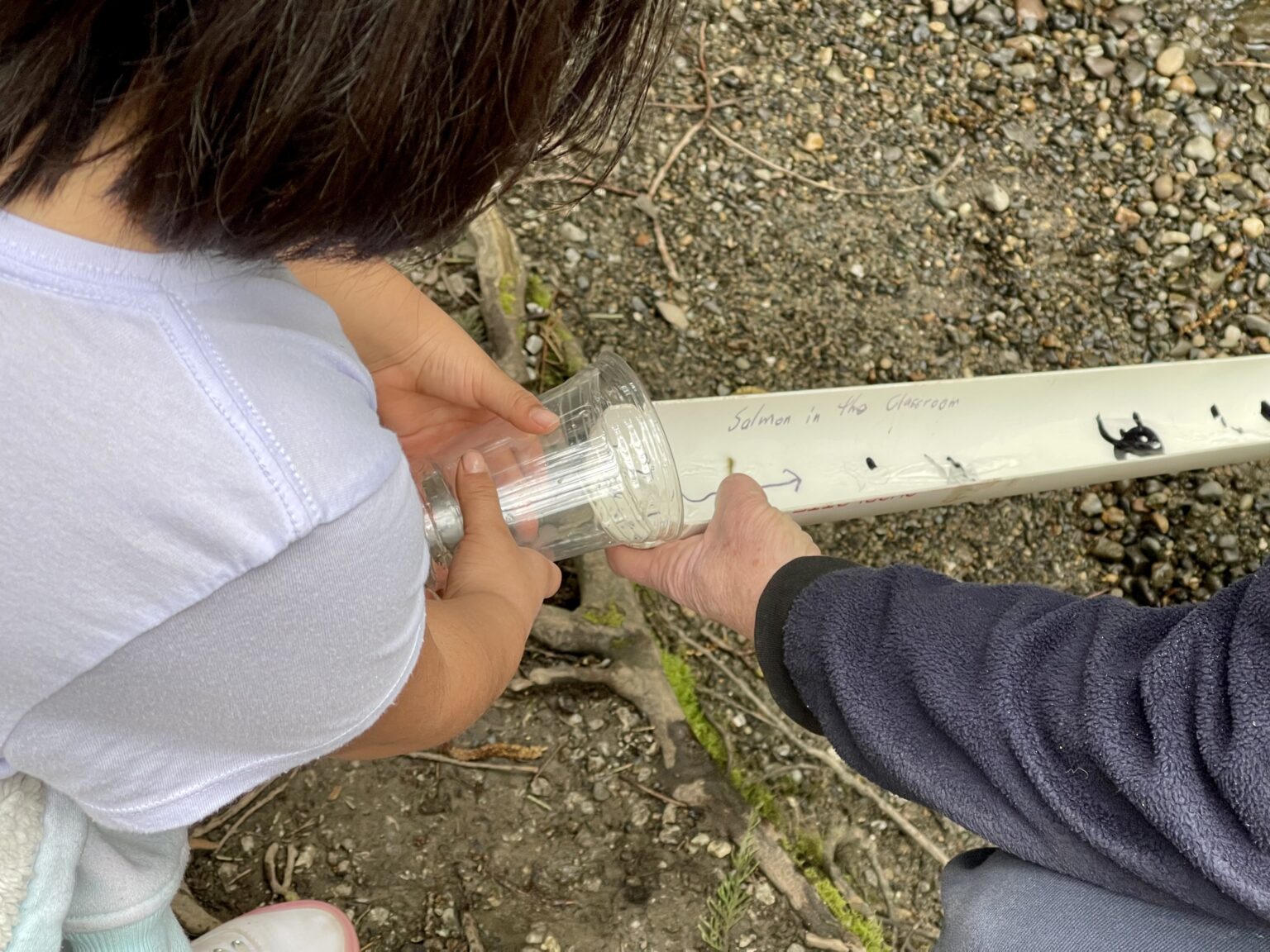Goodbyes chorused through the trees as Lowell Elementary first and fourth graders prepared to release their 115-day-old chum salmon fry into Padden Creek.
One by one, students lined up to release almost 300 fry into the creek while parent and grandparent volunteers kept track of how many fish went down the salmon slides.
The students raised the eggs in their classrooms since mid-January as part of the Salmon in the Classroom program, organized by Bellingham resident Wendy Scherrer.
“It’s an education program that connects schools with the salmon life cycle in their local creeks,” she said. “It’s basically a window into the watershed, a window into science, and a window into the issues.”
Scherrer organizes the program for 16 schools across Bellingham and Ferndale. Each participating school gets around 300 fish eggs to raise in a tank. This year, the chum eggs came from the local Kendall Creek hatchery in Maple Falls.

The program, Scherrer says, is like building scaffolding: students can build off lessons year after year, learning the basics before moving on to more advanced science. This year, four classrooms from Lowell participated.

The first graders learned about the fish and local habitats, while fourth graders learned how to test water quality.
“There’s a lot of different kinds of salmon and things that can affect their water,” said Maggie, a fourth grader in Mr. Peterson’s classroom.
“Yeah, there’s good stuff for them and stuff that causes not very good things to happen to them, like ammonia,” her classmate, Valerie, said.
Their fish were named Bigfoot and Clifford, respectively. Before they were released into Padden Creek, the girls offered supportive messages to their fish to encourage their chances of survival, which can be slim.
“We learned about the life cycles of salmon and we also learned that only two might survive,” said Lilly, another fourth grader. “The standard cycle for salmon would be that they leave as fry and then they’ll go into the estuary and then might get eaten by various predators, so usually only two of them survive.”
Lilly, who wants to learn more about salmon in the future, named her fish Spinner.
Bellingham’s mayor Seth Fleetwood, who attended Lowell Elementary in the 1960s and 70s, attended Friday’s event, and released his own fry, Chumster, into the creek.
“This gives me so much hope for the future,” he told Cascadia Daily News after he released his fry. “It’s nice to know that there are young minds that are caring and enthused. It means they’ll be caring stewards when they grow up.”
Students from Lowell Elementary even learned a salmon habitat song to sing while releasing their chum fry! pic.twitter.com/5weZpaNxAT
— Jules (@julialwashere) April 1, 2022
Scherrer says the hatcheries where she sources the eggs can be controversial, but they provide fantastic educational opportunities for students.
“People love or hate hatcheries, but they have a role,” she said. “If not for education, we have all these creeks with no salmon. Here’s our creeks, but where are our fish?”
Wild salmon populations around Washington have been struggling for years, with several species facing extinction.
Programs like this are “part of the ongoing effort of trying to preserve this important natural resource,” Fleetwood said.
Organizing the program takes a lot of planning, and participating schools typically need to submit permits with the state Department of Fish and Wildlife (DFW) at least six months in advance. The applications have to be reviewed by DFW, as well as local tribal leadership.

Historically, the schools had to raise funds and purchase the tanks themselves, but Scherrer has been organizing donation drives to help the program reach more schools. Residents like Mike McRory and his wife, Elaine, have been active donors to the program, and attended Friday’s release.
McRory is a longtime supporter of environmental education programs like this, as well as the Nooksack Salmon Enhancement Association, a program Scherrer helped develop and eventually lead as the executive director in 1999.
“We’re changing the way we think about the world and our relationship to the environment, and the way we do that is through education,” McRory said. “The most efficient way to do that is with young people because they’re receptive to these ideas … These kids have open minds.”
The program, Scherrer says, is vital to educating future generations of scientists.
“It’s a wonderful program that the community has loved and remembers, and I want to keep it going as long as I live,” Scherrer said. “The happiness that all the kids today had with their grandparents and parents looking on and helping … hopefully it’ll inspire the families to pay attention to the creek and to take care of the creek.”




